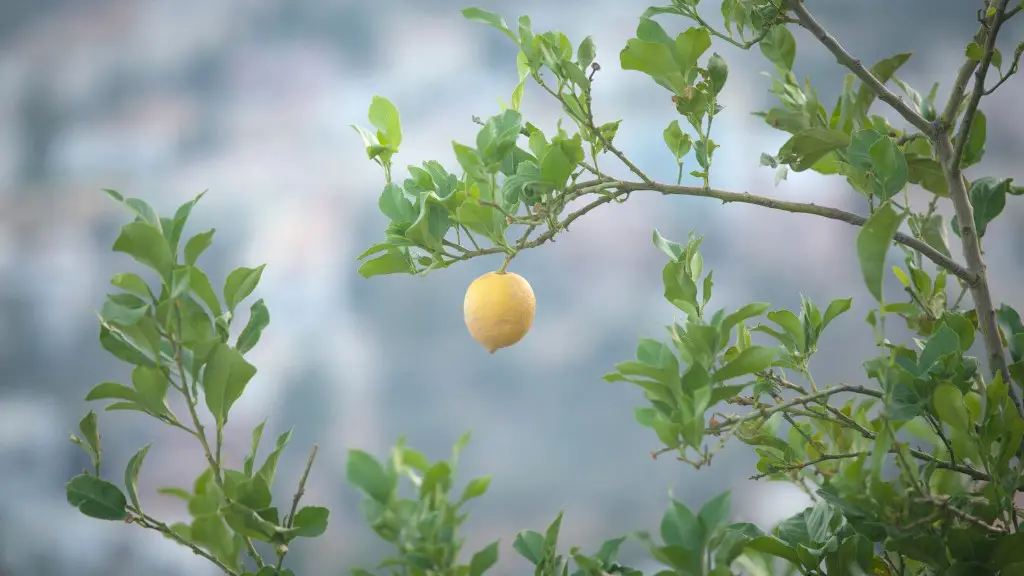The Japanese Cherry blossom tree, or sakura, is one of the most beautiful trees in the world. With its fluffy pink blossoms, it can create a stunning visual effect when in bloom. Growing a Japanese cherry blossom tree is easy enough if you have the right conditions and time – you just need to know where to start.
Understanding the Environment
The Japanese cherry blossom tree needs to be grown in the right environment to ensure that it blooms and matures correctly over time. This includes the soil, temperature and location of where the tree is planted. Cherry blossom trees require well-draining, moist soil when planted, as the soil should not be wet or dry. The temperature should be held between 55-77°F (13-25°C). A certain degree of sun exposure is also important, as this will help the growth of the tree.
Choosing the Plant
When selecting where to buy your Japanese cherry blossom tree, it is important to know what kind of tree you are buying. The varieties of cherry blossom trees vary greatly, so the size and growth potential of the tree will depend on the type. Generally, a healthy cherry blossom tree should have a trunk that is straight and smooth with branches that are evenly spaced from one another. It should also have healthy, deep green leaves and some small buds of flowers visible.
Planting the Tree
Once you have chosen the tree you wish to buy, it is time to plant. When planting the tree, ensure that you place the tree in a spot that is far away from any other trees or objects that may interfere with the growth of the cherry blossom tree. Make sure to dig a hole that is at least twice the size of the pot or ball the tree currently is in. Place the tree in the hole and fill in any remaining holes and then tamp down the soil. Water the tree generously but be sure not to over saturate the soil.
Caring for the Tree
Once the tree has been planted and watered, the next step is to take care of it to ensure it develops correctly. Apply fertilizer if the soil is deficient in some elements. Prune the tree in order to encourage more growth and prevent any dead or overcrowded branches and leaves. The tree must also be protected from extreme weather and temperature conditions, as well as pests or disease. Finally, make sure to water the tree regularly to keep the soil moist.
Growth and Blossoming of the Tree
The Japanese cherry blossom tree should start to grow within a few months of planting and, depending on the tree variety, should start to bloom within two or three years. When the tree does start to bloom, it will be a sight to behold. The cherry blossom trees will produce beautiful pink flowers that will last for several weeks before the petals start to drop from the tree. After the blossoms have dropped, it is time to start the process of caring for the tree again.
Pruning and Maintenance
To keep your cherry blossom trees healthy and lush, pruning and maintenance are essential. Prune dead or unattractive branches in order to get the desired shape and growth of the tree. Then, fertilize the tree and check for any pests or diseases. Keep an eye out for any signs of damage or distress that the tree is experiencing and take steps to address the issue if required. Finally, water the tree regularly and check its overall condition over time.
Harvesting and Enjoying the Blossoms
Once the cherry blossom tree has reached its mature size, you can start to enjoy its beautiful blooms. Each flower will last for about two weeks, so it is important to keep an eye on the tree and pick the flowers at their peak. The flowers can be used in various ways, from making beautiful arrangements to enjoying them with a cup of tea in the garden. Once the blooming season is over, it is time to get ready for the next season.
Protecting and Preserving the Tree
Japanese cherry blossom trees are generally low-maintenance, but it is important to take proper care of the tree in order to ensure a long, healthy life. This includes providing adequate protection from temperatures that are too high or too low, shielding the tree from any pests or diseases, and keeping the tree properly pruned. In addition, it is important to use fertilizer that is designed to enhance the growth and health of the tree. Finally, it is essential to provide the tree with ample water in order to avoid dehydration.
Insights, Analysis and Evaluation
Growing a Japanese cherry blossom tree is a rewarding process and can bring a sense of peace, serenity and beauty to your home. The long-term care of such a tree requires dedication and patience, as the tree can take some time to bloom properly. However, if you follow the recommended steps and provide a suitable environment, your tree should bloom every spring and transform your garden into a beautiful oasis.

